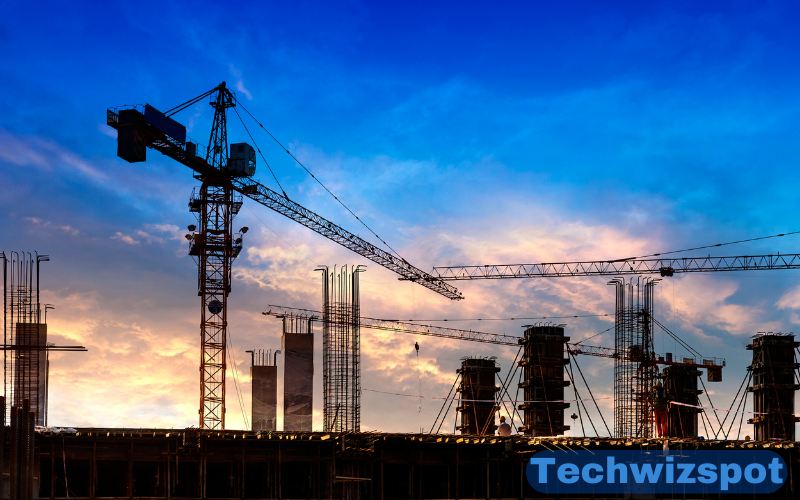The construction industry is always changing. With new technologies and methods, construction sites look different today than they did a few years ago. This evolution is expected to continue, bringing many changes to how buildings are designed and built. In this article, we will explore how construction sites will grow and evolve in the coming years.
Advanced Technologies
Technology is playing a big role in transforming construction sites. One of the most important advancements is the use of Building Information Modeling (BIM). BIM allows architects and engineers to create digital models of buildings before they are constructed. These models can be used to plan the entire construction process. This helps reduce errors and saves time and money.
Drones are another technology changing construction sites. Drones can be used to survey land, inspect structures, and monitor progress. They can capture images and videos from angles that are hard to reach. This provides valuable information quickly and efficiently.
Robots are also becoming more common on construction sites. Robots can perform tasks that are dangerous or repetitive for humans. For example, some robots can lay bricks or pour concrete. This can speed up the construction process and improve safety.
Green Building Practices
Sustainability is becoming a key focus in construction. Green building practices are being adopted to reduce the environmental impact of construction projects. This includes using eco-friendly materials, reducing waste, and improving energy efficiency.
One example is the use of recycled materials. Many construction sites now use materials that have been recycled from old buildings. This helps reduce the need for new materials and decreases waste.
Energy-efficient buildings are also becoming more popular. These buildings use less energy for heating, cooling, and lighting. They may have features like solar panels, energy-efficient windows, and better insulation. This not only reduces the building’s carbon footprint but also lowers energy costs for the occupants.
Water conservation is another important aspect of green building practices. Many new buildings are designed to use less water. This can be achieved through features like low-flow toilets and faucets, rainwater harvesting systems, and drought-resistant landscaping.
Modular and Prefabricated Construction
Modular and prefabricated construction methods are becoming more common. These methods involve building sections of a structure in a factory and then assembling them on-site. This can significantly reduce construction time and costs.
Prefabricated buildings can be made with high precision in a controlled environment. This can lead to better quality and less waste. It also allows for construction to continue regardless of weather conditions.
Modular construction is also very flexible. It allows for easy modifications and expansions. This is particularly useful for projects like hospitals, schools, and office buildings, where space needs may change over time.
Improved Safety Measures
Safety is always a top priority on construction sites. New technologies and methods are helping to improve safety for workers. For example, wearable technology can monitor workers’ health and safety in real time. These devices can track vital signs, detect fatigue, and alert workers to potential hazards.
Augmented reality (AR) is another technology improving safety. AR can be used to provide workers with detailed information about their tasks. This can help them avoid mistakes and reduce the risk of accidents.
Training programs are also evolving. Virtual reality (VR) is being used to train workers in a safe, controlled environment. This allows them to practice skills and learn safety procedures without the risk of injury.
Smart Construction Sites
The concept of smart construction sites is becoming more popular. Smart construction sites use technology to improve efficiency and safety. This includes the use of sensors, IoT devices, and data analytics.
Sensors can be used to monitor various aspects of a construction site. For example, they can track equipment usage, monitor environmental conditions, and detect structural issues. This information can be analyzed to optimize the construction process and prevent problems before they occur.
IoT devices can connect different parts of the construction site. This allows for better communication and coordination. For example, IoT devices can be used to track the location of equipment and materials. This can help ensure that everything is in the right place at the right time.
Data analytics can be used to analyze the vast amounts of data generated on a construction site. This can provide valuable insights into the construction process. For example, data analytics can be used to identify bottlenecks, predict delays, and optimize resource allocation.
Collaboration and Communication
Effective collaboration and communication are essential for successful construction projects. New technologies are making it easier for teams to work together. For example, cloud-based project management tools allow teams to share information and collaborate in real time.
These tools can be used to manage tasks, track progress, and communicate with team members. They can also store important documents and information. This makes it easier for everyone to stay on the same page.
Video conferencing is another technology improving communication. It allows team members to have face-to-face meetings, even if they are in different locations. This can help improve collaboration and reduce misunderstandings.
Challenges and Future Trends
While the future of construction sites looks promising, there are still challenges to overcome. One of the biggest challenges is the shortage of skilled labor. As the construction industry evolves, there is a growing need for workers with advanced skills. Training and education programs will be essential to address this issue.
Another challenge is the high cost of new technologies. Many construction companies may be hesitant to invest in new technologies due to the high initial costs. However, as these technologies become more widespread, their costs are expected to decrease.
Despite these challenges, the future of construction sites is bright. With the continued advancement of technology, construction sites will become more efficient, safer, and more sustainable. This will lead to better quality buildings and a more productive construction industry.
Conclusion
In conclusion, construction sites are set to grow and evolve in many exciting ways. Advanced technologies like BIM, drones, and robots are transforming the way buildings are designed and constructed. Green building practices are reducing the environmental impact of construction projects. Modular and prefabricated construction methods are making the construction process faster and more efficient. Improved safety measures are protecting workers and reducing the risk of accidents. Smart construction sites are using technology to optimize the construction process. Finally, new collaboration and communication tools are helping teams work together more effectively.
While there are challenges to overcome, the future of construction sites looks promising. As technology continues to advance, we can expect to see even more innovative solutions that will shape the future of the construction industry.



